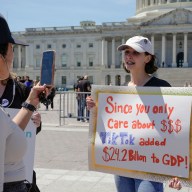By Trevor Hunnicutt and Tim McLaughlin
NEW YORK/BOSTON (Reuters) – BlackRock Inc’s BlackRock is replacing a handful of portfolio managers and doubling down on an investment in computer models and data science to boost returns and cut fees. The moves affect about 11 percent of its $275 billion active stock fund business but are a drop in the ocean for the company, the world’s largest asset manager. Roughly two-thirds of its $5 trillion in assets under management and half its fee income come from index-tracking funds and exchange-traded funds, products investors are flocking to for superior returns and cheaper management fees. For rivals heavily reliant on active stock pickers, hiring computer geniuses to develop investing models and spending more on data mining may not be a cost-effective way of boosting performance.
Axing portfolio managers can also trigger investor withdrawals.
“This is a little experiment for BlackRock but bad news for a lot of players in the market,” said Kyle Sanders, a stock analyst for Edward Jones.
The pain could be concentrated among smaller, active fund managers reliant on fleet-footed retail investors. Mangers of larger funds can put more money into their investment process and tend to have more institutional clients willing to endure a period of underperformance. But even larger companies are at risk.
Analysts at Morgan Stanley “Over the next three years, we see the management fee rate compressing by 12 percent, leading to revenue degradation of -18 percent,” Morgan Stanley analysts said in a recent note.
Franklin Templeton, the No. 5 mutual fund company in the United States by assets, did not respond to a request for comment.
In its most recent quarter, Franklin Templeton’s assets fell 6 percent from the year prior, while operating revenue fell by 11 percent.
For the wider industry, Morgan Stanley analysts’ base case is fee compression of 10 percent to 15 percent and more than 25 percent in its bear case.
“We foresee a multi-year adjustment process that will affect the earnings and shares of publicly traded traditional asset managers,” Morgan Stanley analyst Michael Cyprys said in a separate, recent research note. He added that fee cuts and product re-engineering could drive some companies to go private “and usher in an era of large-scale consolidation – not without risks.” Consolidation is already happening. Janus Capital Group Inc YEARS OF FEE PRESSURE
Actively managed U.S. stock funds have not reported a year of net inflows since 2005, according to Morningstar.
Over the past 12 months alone, fund companies including household names such as American Funds, Fidelity Investments, Franklin Templeton and T. Rowe Price Group Inc By comparison, index-fund pioneer Vanguard Group attracted $342 billion in the United States, much of it into its passively managed index funds and exchange-traded funds.
A look at industry fees helps explain why. Despite a 15 percent drop in U.S. equity fund fees in the decade ending in 2015, mutual fund managers on average still charge $131 for every $10,000 they manage, according to the Investment Company Institute, a trade group. Vanguard’s U.S. stock funds fees average $18, according to Morningstar.
Despite their higher costs, just 14 percent of active broad-market, large-cap stock funds beat their passive counterparts over 10 years through 2016.
American Funds defended its strategy. Low-fee shares of its largest fund, the $155 billion Growth Fund of America, beat most of its peers over five years, according to Thomson Reuters’ Lipper unit. “We are and will always be an investment management company first, run by people with deep expertise and phenomenal track records – enabled by some of the world’s leading next-generation technology,” an American Funds spokeswoman said in a statement. Fidelity said individual active managers continued to beat the market.
“The active/passive debate usually focuses on the industry as a whole and the performance of the average active manager, but as with every industry there are some that are better than others,” a Fidelity spokesman said in an email. Will Danoff, one of Fidelity’s best stock pickers, experienced one of his worst years as a portfolio manager in 2016 when his $107 billion Contrafund T. Rowe Price declined to comment.
For its part, BlackRock’s actively managed equity business posted $20.2 billion in outflows last year, according to its earnings report. Its move to a quantitative focus underscores the eroding confidence in the ability of humans to pick large-cap stocks that outperform benchmarks such as the S&P 500. Analysts say, however, the industry will have a chance to prove its worth if there is a stock market correction.
“When (markets) are all going up at once, and all sectors are firing on all cylinders, you’re fine to be all-passive,” said Tom Roseen, senior analyst for Lipper.
“But when markets are tanking, if they make the right bets, then we’ll see (some) active mutual funds beating passive, but we won’t see that at all of them.”
(Reporting by Trevor Hunnicutt in New York and Tim McLaughlin in Boston; Additional reporting by Ross Kerber in Boston; Editing by Carmel Crimmins and Steve Orlofsky)
















